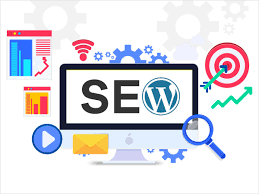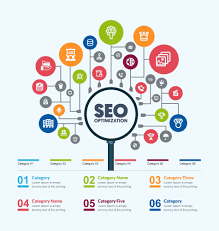Unlocking the Power of SEO: Elevate Your Online Presence with Search Engine Optimization
The Power of Search Engine Optimization (SEO)
Search Engine Optimization, commonly known as SEO, is a fundamental digital marketing strategy that aims to increase the visibility and ranking of a website on search engine results pages. In today’s highly competitive online landscape, SEO plays a crucial role in driving organic traffic and improving the overall online presence of businesses.
Key Components of SEO
SEO encompasses a variety of techniques and practices that help search engines understand the content and relevance of a website. Some key components of SEO include:
- Keyword Research: Identifying relevant keywords that potential customers are likely to use when searching for products or services.
- On-Page Optimization: Optimizing website content, meta tags, headings, and images to make them more search engine-friendly.
- Off-Page Optimization: Building high-quality backlinks from reputable websites to improve the site’s authority and credibility.
- Technical SEO: Ensuring that the website is technically sound, with fast loading speeds, mobile-friendliness, and secure connections.
- Content Creation: Developing high-quality, relevant content that engages users and encourages them to stay on the site longer.
The Benefits of SEO
Implementing effective SEO strategies can have numerous benefits for businesses, including:
- Increase in Organic Traffic: By ranking higher on search engine results pages, businesses can attract more organic traffic without having to rely solely on paid advertising.
- Better User Experience: Optimizing a website for search engines often leads to an improved user experience, with faster loading times and easy navigation.
- Brand Credibility: Websites that appear at the top of search results are perceived as more trustworthy and credible by users.
- Roi Return on Investment (ROI): Compared to traditional marketing methods, SEO offers a higher ROI as it targets users who are actively searching for products or services related to your business.
In Conclusion
In conclusion, Search Engine Optimization is an essential tool for businesses looking to establish a strong online presence and reach their target audience effectively. By investing in SEO strategies tailored to their specific needs, businesses can drive organic traffic, improve brand visibility, and ultimately achieve long-term success in the digital realm.
Six Essential SEO Tips for Enhancing Your Online Presence
- Research and target relevant keywords for your content
- Optimize meta tags including title tag and meta description
- Create high-quality and engaging content for users
- Improve website loading speed for better user experience
- Build quality backlinks from reputable websites
- Regularly monitor and analyse your SEO performance
Research and target relevant keywords for your content
Researching and targeting relevant keywords for your content is a crucial aspect of effective Search Engine Optimization (SEO). By identifying and incorporating the right keywords that align with the search intent of your target audience, you can enhance the visibility of your website on search engine results pages. This strategic approach not only helps in attracting organic traffic but also ensures that your content is reaching the right audience who are actively seeking information related to your products or services. Conducting thorough keyword research and optimising your content accordingly can significantly improve your website’s ranking and overall online presence.
Optimize meta tags including title tag and meta description
Optimizing meta tags, including the title tag and meta description, is a crucial aspect of effective Search Engine Optimization (SEO). The title tag serves as the headline that appears in search engine results, influencing users’ decision to click on your website. Crafting a compelling and relevant title tag can significantly improve click-through rates and enhance visibility. Additionally, the meta description provides a brief summary of the page’s content, further enticing users to visit your site. By strategically optimizing these meta tags with relevant keywords and engaging copy, businesses can improve their search engine rankings and attract more organic traffic to their website.
Create high-quality and engaging content for users
Creating high-quality and engaging content for users is a crucial aspect of effective Search Engine Optimization (SEO). By crafting content that is not only informative and relevant but also captivating and user-friendly, businesses can attract and retain the attention of their target audience. Quality content not only helps to establish credibility and authority in the eyes of search engines but also encourages users to stay longer on the website, ultimately leading to higher engagement, increased conversions, and improved search engine rankings. In essence, prioritising the creation of compelling content tailored to user needs is key to a successful SEO strategy.
Improve website loading speed for better user experience
Improving website loading speed is a crucial aspect of Search Engine Optimization (SEO) that directly impacts user experience. A fast-loading website not only enhances user satisfaction but also reduces bounce rates and increases the likelihood of visitors engaging with the content. By prioritising website speed optimisation, businesses can create a seamless browsing experience for their audience, leading to improved search engine rankings and ultimately driving more organic traffic to their site.
Build quality backlinks from reputable websites
Building quality backlinks from reputable websites is a crucial aspect of a successful SEO strategy. By establishing strong connections with high-authority sites, businesses can enhance their own website’s credibility and visibility in search engine results. These backlinks serve as endorsements from trusted sources, signalling to search engines that the content is valuable and relevant. This not only improves the website’s ranking but also drives targeted traffic from authoritative sites to boost overall online presence and reputation.
Regularly monitor and analyse your SEO performance
Regularly monitoring and analysing your SEO performance is essential for maintaining a successful online presence. By tracking key metrics such as website traffic, keyword rankings, and conversion rates, you can gain valuable insights into the effectiveness of your SEO strategies. This data allows you to identify areas for improvement, refine your tactics, and stay ahead of the competition in the ever-evolving digital landscape. Consistent monitoring and analysis ensure that you can adapt to algorithm changes, user behaviour trends, and industry developments to maximise the impact of your SEO efforts and drive sustainable growth for your business.



